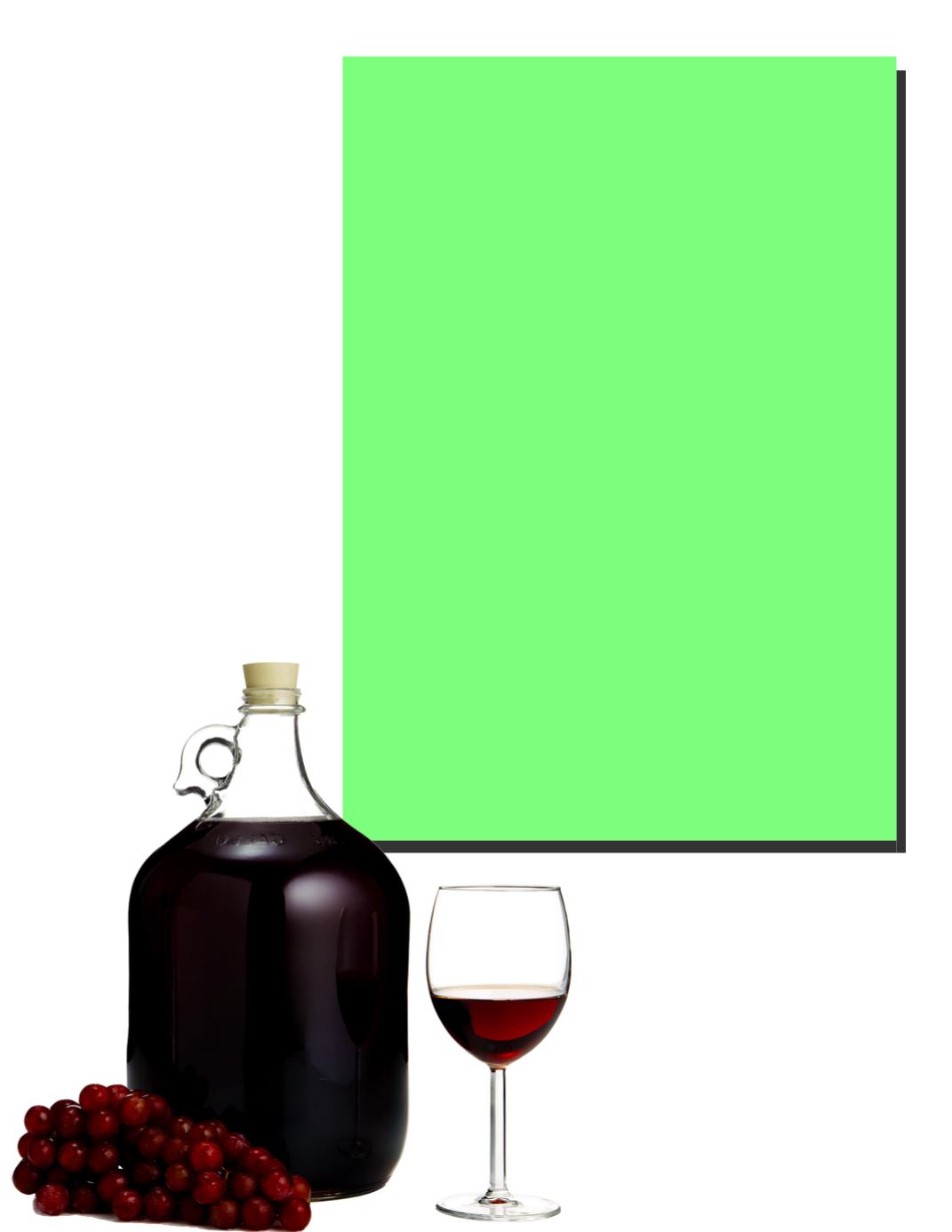

70
-
Step One - Choose your recipe
and fruit
For your first attempt at winemaking,
it is usually best to stick to a simple,
straightforward recipe for grape wine.
You probably have familiarity as to
what a grape wine should taste like,
and it’s usually easy to find suitable
grapes or grape concentrate. Re-
member to inspect your fruit carefully.
Crush a couple of grapes between
your fingers and taste the juice. If you
have purchased a hydrometer, use it
to measure the grapes’ sugar content.
It should be between 22 and 24 brix,
which means that the alcohol content
of the wine will be approximately 11
percent. Next, thoroughly wash fruit,
removing any debris or insects. Throw
out any grapes that appear to be rot-
ting. Make sure to remove the stems
from the grapes. The stems can cause
a wine to taste bitter.
Step Two - Wash your equip-
ment
It is essential that you begin with a
sanitary environment and absolutely
clean equipment before starting the
process of making wine. Used bot-
tles, in particular, should
be sterilized before being
used again.
Step Three -
Extract flavor
Depending on
the recipe that
you are follow-
ing, you will
need to
extract
the aro-
ma and
flavor
of the
fruit by
crush-
ing,
chop-
ping,
soaking,
Primary fermentation container
(4-gallon food grade quality heavy plastic container with lid)
Secondary fermentation containers (2 or 3 1-gallon glass jugs)
Bung
(Rubber cork for the airlock to fit in, should fit into secondary
fermentation container)
Airlock
Large nylon mesh straining bag
6 feet of clear plastic ½” tubing
5 wine bottles for one gallon of wine
Corks (size #9 fits standard wine bottles)
Hand corker
Hydrometer (measures sugar content)
Other items that are useful but not essential are:
Thermometer
Acid titration kit (measures acid level)
Grape press (essential if you are making wine from fresh grapes)
Thermometer
All of these items can be found at a winemaking supply store.
While shopping for equipment, make sure to pick up the following
specific ingredients that you will need to add to your wine:
Campden tablets
Wine yeast
Yeast nutrient
Pectic enzyme
Grape tannin
Acid blend
You will need:
pressing,
or boiling.
The
extracted fruit
is
called “must.”
Make
sure to
fol-
low the
recipe’s
instructions
carefully
with this pro-
cedure. It
can make or
break the
quality of the
wine. Once
extracted,
the must will be placed in a primary
fermentation container.
Step Four - Blend Additives
There is more to wine than just fruit,
and these other ingredients are neces-
sary to the flavor, quality, and shelf life
of your vintage. Pay close attention to
the order in which you blend in addi-
tives. Additives are generally blended
with the must in the primary fermenta-
tion container. However, the yeast may
not be added in until days after the
other additives are blended.














